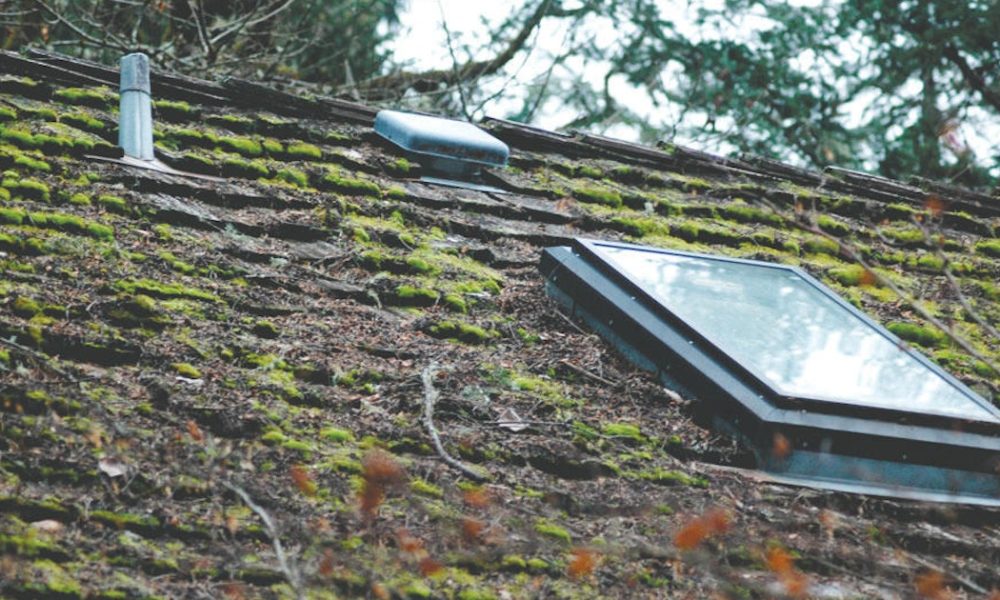 Moss is inevitable in the Pacific Northwest, where seasonal rain keeps it flourishing. Photo Provided by Kym Pokorny
Moss is inevitable in the Pacific Northwest, where seasonal rain keeps it flourishing. Photo Provided by Kym Pokorny
BY KYM POKORNY
Chronicle news service
CORVALLIS – In the moist Pacific Northwest, moss on roofs is inevitable.
The ubiquitous plant clings to shingles, causing damage that can lead to expensive repairs and replacements.
There’s nothing to be done about the moisture, but moss also needs shade to grow. The key to keeping it at bay is to trim trees so sunlight filters to the surface of the roof.
”You can clean all you want but to keep moss at bay, the environment needs to change, said Jay Pscheidt, a plant pathologist with Oregon State University Extension Service. ”You’ve got to let the sun in or it will return.”
Mosses are primitive, flowerless plants that number 12,000 species.
Chances are it’s Dicranoweisia cirrata and Bryum capillare making a home on your roof. The growth of moss doesn’t damage surfaces, Pscheid said. The moss traps soil and debris, which retain water and keep the roof wet for a longer period. That encourages the growth of fungi and hastens decomposition of wood roofs.
Moss clings to asphalt and metal roofs, as well, but doesn’t degrade those materials. However, moss will lift the shingles, allowing water through to damage underlying materials.
No matter what it’s made of, a roof should be kept clean.
Although many people love moss, keeping it off the roof is essential for the roof’s longevity.
Also remove it from areas like decks and steps where people may slip and fall. If you’re one of those who like moss, let it grow in garden areas where it can be enjoyed without the danger of injury.
Before applying anything to kill the moss, clean the roof. If you’re experienced with a pressure washer, use that to clean. If not, let a professional do it. Improper pressure washing can ruin your roof. Instead of a pressure washer, use a long-handled scrub brush. Once clean, apply one of the following solutions with a pump-style sprayer:
• Zinc sulfate (monohydrate): Mix 3 pounds of powder in 9 gallons of water. This amount will treat 600 to 1,000 square feet of roof using a pump sprayer, depending on the wood’s condition. In areas of heavy growth or where conditions favor moss growth, use a solution of 1 pound of powder mixed in 3 gallons of water to treat 200 square feet. Don’t use this treatment if you have copper gutters, downspouts or flashing; zinc sulfate corrodes copper.
• Potassium salts of fatty acids: These soap-based biodegradable products kill moss by penetrating the cell walls and changing the membranes so that the cells leak and the moss dies. The product is noncorrosive and poses minimal risk to humans and animals.
With both chemicals, avoid overspraying on adjacent plants, which will burn, and rinse any plants that are accidentally treated. Thoroughly rinse any tools or equipment used to apply these products.
Don’t attempt this chore if you’re unsure of your abilities. If you decide to go for it, take precautions:
• Wear shoes with good traction that will grip the roof.
• Put your ladder on stable ground and have it extend three feet above the roof line. Secure the top to the roof when possible.
• Use a bucket and rope to transport tools and other items to the roof; don’t carry them up the ladder.
• Use safety belts and lines when the roof pitch is more than 23 degrees, you are working closer than six feet to the edge, or the eaves are more than 16 feet from the ground.
• Pay attention to the safety precautions on the labels of the products you use.







